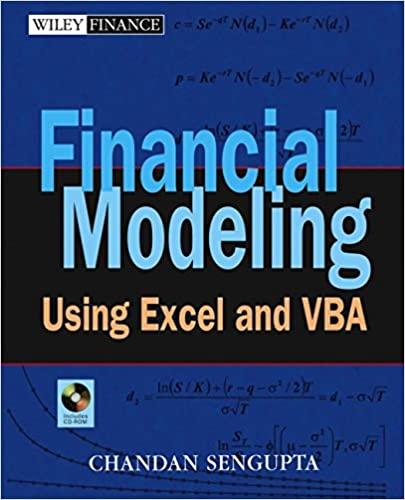The Lake Charles Chemicals LLC is considering investing in a new gas to liquids technology. R&D scientists and engineers are investigating a new liquid-based catalyst system that will enable to operate the reactor at lower temperature and pressure to achieve higher conversion efficiencies. The company expects a three-year R&D period before they start producing the product as a commercial commodity. The following financial information is presented for management review. R&D Cost: $6.5 million over a three-year period: $1 million at the beginning of year; $2.5 million at the beginning of year 2; and $3 million at the beginning of year 3. For tax purposes, these R&D expenditures will be expensed rather than amortized. Capital investment: $5 million at the beginning of year 4. This investment consists of $2 million in a building and $3 million in plant equipment. The company already owns a piece of land as the building site. Financing: The company also borrowed $2 million from a national bank at 25% interest at the beginning of year 4 Depreciation method: The building is depreciated based on straight line depreciation method and the plant equipment is depreciated based on double-declining balance method Project life: 10 years after a three-year R&D period. Salvage value: 10% of the initial capital investment for the equipment and 50% for the building (at the end of the project life) Total Sales: $50 million (at the end of year 4), with an annual sales growth rate of 10 % per year (compound growth) during the next five years (year 5 through year 9) and - 10% (negative compound growth) per year for the remaining project life Out-of-pocket expenditures: 80% of annual sales. Working Capital: $5 million is considered as an investment at the beginning of year 4 and fully recovered at the end of project life. Marginal tax rate: 40% a) Determine the net after-tax cash flows over the project life b) Determine the IRR for this investment c) Determine the equivalent annual worth for the investment at MARR 20% Submit your work in the form of a Table on paper (online submissions not accepted). The numbers in the Table should be readable for a grade. Additional work sheets can be submitted to show the work as needed. The submission should be stapled and student name should be printed legibly. Take home should be carried out without consulting. Copying from others will result In ZERO grade for all parties without further deliberation The Lake Charles Chemicals LLC is considering investing in a new gas to liquids technology. R&D scientists and engineers are investigating a new liquid-based catalyst system that will enable to operate the reactor at lower temperature and pressure to achieve higher conversion efficiencies. The company expects a three-year R&D period before they start producing the product as a commercial commodity. The following financial information is presented for management review. R&D Cost: $6.5 million over a three-year period: $1 million at the beginning of year; $2.5 million at the beginning of year 2; and $3 million at the beginning of year 3. For tax purposes, these R&D expenditures will be expensed rather than amortized. Capital investment: $5 million at the beginning of year 4. This investment consists of $2 million in a building and $3 million in plant equipment. The company already owns a piece of land as the building site. Financing: The company also borrowed $2 million from a national bank at 25% interest at the beginning of year 4 Depreciation method: The building is depreciated based on straight line depreciation method and the plant equipment is depreciated based on double-declining balance method Project life: 10 years after a three-year R&D period. Salvage value: 10% of the initial capital investment for the equipment and 50% for the building (at the end of the project life) Total Sales: $50 million (at the end of year 4), with an annual sales growth rate of 10 % per year (compound growth) during the next five years (year 5 through year 9) and - 10% (negative compound growth) per year for the remaining project life Out-of-pocket expenditures: 80% of annual sales. Working Capital: $5 million is considered as an investment at the beginning of year 4 and fully recovered at the end of project life. Marginal tax rate: 40% a) Determine the net after-tax cash flows over the project life b) Determine the IRR for this investment c) Determine the equivalent annual worth for the investment at MARR 20% Submit your work in the form of a Table on paper (online submissions not accepted). The numbers in the Table should be readable for a grade. Additional work sheets can be submitted to show the work as needed. The submission should be stapled and student name should be printed legibly. Take home should be carried out without consulting. Copying from others will result In ZERO grade for all parties without further deliberation







